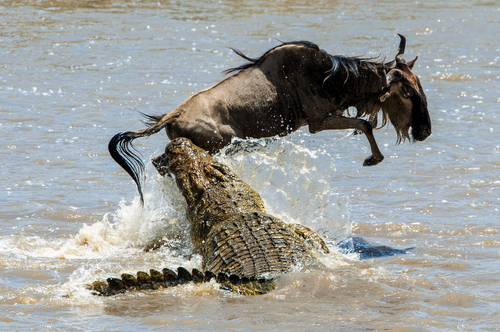
In 2023, according to the ‘Reptile Database’ there are almost 12,000 extant species of reptile in the world. All living reptiles are grouped into one of four Orders, which are: turtles (includes tortoises and terrapins), crocodilians, squamates (lizards and snakes), and rhynchocephalians (tuatara). The latter Order contains a single species of reptile, i.e. the tuatara, which is endemic to New Zealand.
Here is a brief narrative on the five largest species of reptile on the planet:
Saltwater Crocodile
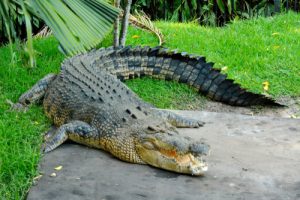
Photo credit: Alizada Studios/Shutterstock.com
The saltwater crocodile (Crocodylus porosus), also known as the estuarine crocodile and the Indo-Pacific crocodile, is the largest of the world’s living reptiles. There is fossilised evidence that confirms the species lived some 4.5 million years ago. However, it is considered by some experts that the ancient crocodilian may be as old as 12 million years. Males of the species have been recorded at as much as 7 m in length and 1.3 tonnes in weight. However, females are much smaller and grow to a maximum of 4 m in length. The range of the saltwater crocodile is greater than any other crocodile species, stretching from the east coast of India, across Southeast Asia, to northern Australia and Micronesia.
The saltwater crocodile is an opportunistic feeder that preys on just about any animal that happens to enter its territory, including humans. The apex predator is equally happy in a saltwater environment, the brackish waters of a mangrove swamp, or a freshwater river estuary. Though the saltwater crocodile spends much of its time in the water, it comes ashore to bask in the sun and lay eggs.
Nile Crocodile
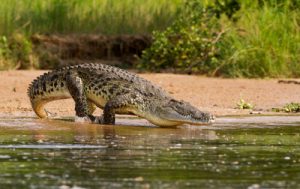
Photo credit: diegooscar01/Shutterstock.com
The Nile crocodile (Crocodylus niloticus), after the saltwater crocodile, is the world’s second-largest extant reptile. It is the commonest species of crocodile in Africa, with a range that covers much of Sub-Saharan Africa, the Nile basin, and Madagascar. The very largest males of the species have been measured at more than 6 m and weighed in excess of a tonne. However, most male specimens are within the range of 3 m to 5 m, weighing up to 750 kg. Like all crocodiles, the species is sexually dimorphic, where females on average are some 30% smaller than males.
The Nile crocodile is a carnivorous scavenger that will feed on just about any living or dead animal. It is also the world’s most dangerous species of crocodile and is responsible for hundreds of human deaths every year. It has a diverse habitat, including small brackish waters, fast-flowing rivers, swamps, dams, tidal lakes, and estuaries. In Madagascar, the remnant population is also known to enter marine environments for brief periods.
Orinoco Crocodile
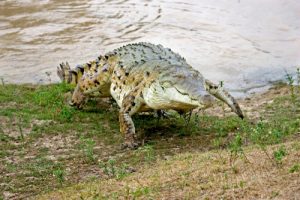
Photo credit: slowmotiongli/Shutterstock.com
The Orinoco crocodile (Crocodylus intermedius) is listed by the IUCN as “critically endangered”. The species is only found in the Orinoco River basin in Venezuela and Colombia. During the rainy season (April to October), the apex predator tends to migrate to the quiet lagoons, ponds, and lakes, within the basin. The very largest males have been measured at more than 5 m in length and weighed in at some 700 kg. However, they rarely measure more than 4 m or exceed 400 kg in weight. Females are typically around 40% smaller than males.
The Orinoco crocodile’s main diet is fish but they will eat almost any living thing that invades their territory. Between the 1940s to the 1960s, they were slaughtered by the thousands for their skins. As a result of indiscriminate hunting, they were on the brink of extinction. The species was given protected status in the 1970s but today’s wild population is still only estimated at between 500 and 1,500 individuals. The two current captive breeding programmes for the Orinoco crocodile are both in the USA.
Leatherback Turtle
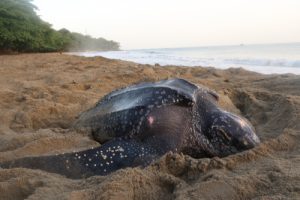
Photo credit: William Farah/Shutterstock.com
The leatherback turtle (Dermochelys coriacea) is the largest sea turtle in the world and is the only species that does not have scales or a hard shell. Instead, its back is covered in oily leather-like skin which obviously lends itself to the name of the species. The leatherback is the world’s largest non-crocodilian reptile and can measure up to 1.8 m in length and weigh up to 500 kg. It also has the widest global distribution of any reptile, since it is found in all three of the world’s major oceans, i.e. the Atlantic, the Indian, and Pacific.
The recent best estimate by experts of nesting female leatherbacks worldwide is between 26,000 and 43,000. This represents a dramatic decline from the 1980 number of 115,000. The most significant nesting sites of the leatherback are around the Caribbean and Gabon on the West African coast. The leatherback’s diet consists mostly of jellyfish, though they also eat small amounts of crustaceans, fish, and sea urchins.
Black Caiman
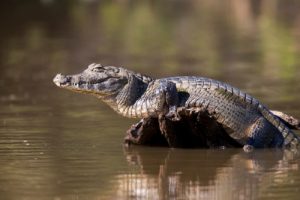
Photo credit: Vaclav Sebek/Shutterstock.com
The black caiman (Melanosuchus niger) is the largest species of the caiman family. Endemic to the Amazon Basin, its range covers much of the central and northern regions of South America. The largest specimens of the apex predator have been recorded at up to 4.5 m in length and 300 kg in weight. The dark scaly skin of the black caiman helps it to absorb heat and is obviously responsible for the name of the species. Juveniles are with born with yellow or white banding, which gradually disappears with age.
Over much of the last century, the black caiman was relentlessly hunted for its particular tough skin. It is thought that this campaign of slaughter may have reduced the overall population by as much as 99 percent. The result is that the species is now almost extinct in some of its former range, namely Colombia, and the River Amazon itself. However, experts estimate that the current global population of black caiman may be as high as one million individuals, and thus, it is classified as of being “least concern” by the IUCN. While fish form the staple of the caiman’s diet, there is nothing much off of the menu for a mature adult.
Header photo credit: Sergey Uryadnikov/Shutterstock.com
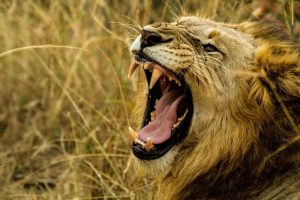
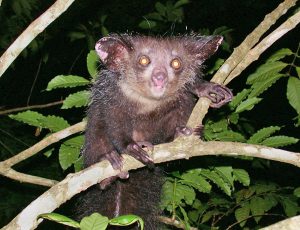
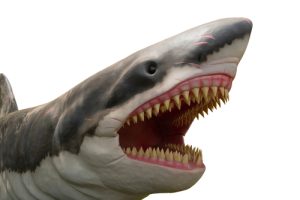

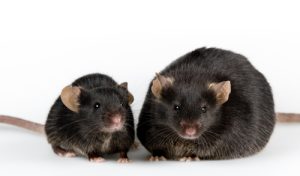
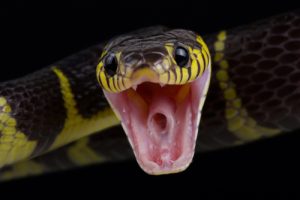
[…] year by these lethal reptiles. Most of the fatal attacks are carried out by just two species: the salt-water crocodile and the Nile crocodile. However, several other species like the mugger crocodile, black caiman and […]